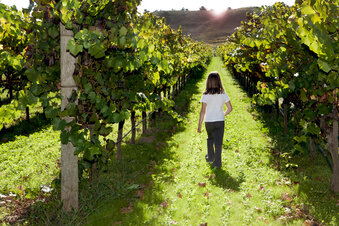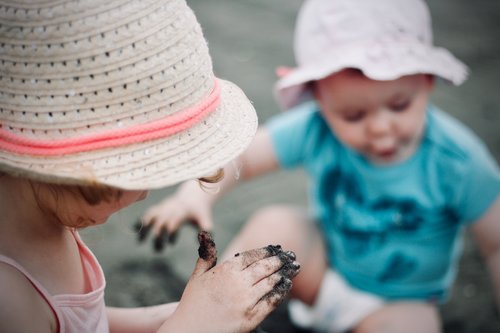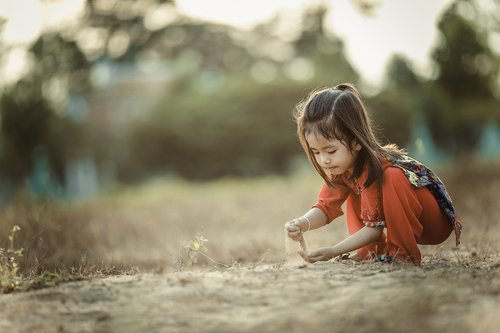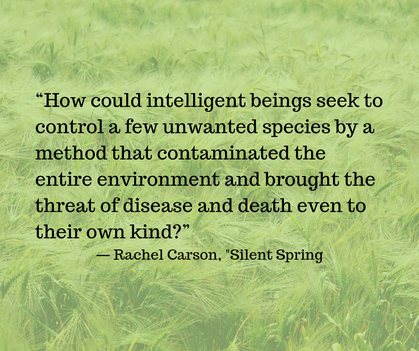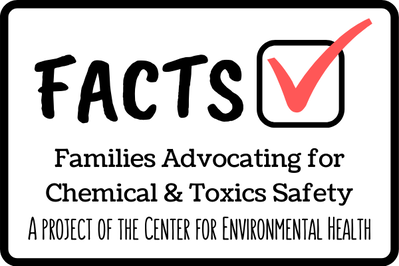WE NEED TO PROTECT OUR CHILDREN AND FUTURE GENERATIONS
|
CHILDREN ARE UNIQUELY VULNERABLE TO ENVIRONMENTAL RISKS
In regards to environmental health, children are our most vulnerable population. Children in disadvantaged communities (marginalized and low-income areas on the edges of industry and agriculture with contaminated water, air, and food sources) face the highest risks. |
HOW ARE CHILDREN EXPOSED TO TOXICS AND WHY ARE THEY SO VULNERABLE?
Consider how children learn and play. They touch everything! And they are supposed to! That's how they learn. They roll around on the ground, carpet, grass, and furniture. They climb over, under, and inside of things. They learn about things by putting them in their mouths. All of these behaviors are normal, necessary, and can be risky when it comes to toxics exposure. Their natural play and developmental behaviors make them more vulnerable to exposure.
Children breathe more rapidly, eat more, and drink more relative to their body weights. Their brains, nervous systems, and organs continue developing after birth and throughout adolescence, and are therefore more vulnerable to the effects of toxics exposure. Children's immature organs cannot remove toxics from their bodies as readily as healthy adults.
Simply by virtue of being a child, children experience greater levels of exposure and more significant health challenges due to exposures. Childrens' biological and developmental needs put them at a greater risk of exposure. Children are more sensitive to the effects of toxicants than most adults.
Disadvantaged communities face the highest risk. Industry and agricultural workers who work directly with toxicants, their children and communities that reside nearby face significant and regular exposure.
Considering the routes of exposure in relationship to children’s biological and behavioral needs, it is easy to understand how children are at a greater risk of exposure and why we need to become informed and enact policies that protect our children’s health. All children deserve to grow and develop unimpeded by toxics in their natural, home, and learning environments.
Consider how children learn and play. They touch everything! And they are supposed to! That's how they learn. They roll around on the ground, carpet, grass, and furniture. They climb over, under, and inside of things. They learn about things by putting them in their mouths. All of these behaviors are normal, necessary, and can be risky when it comes to toxics exposure. Their natural play and developmental behaviors make them more vulnerable to exposure.
Children breathe more rapidly, eat more, and drink more relative to their body weights. Their brains, nervous systems, and organs continue developing after birth and throughout adolescence, and are therefore more vulnerable to the effects of toxics exposure. Children's immature organs cannot remove toxics from their bodies as readily as healthy adults.
Simply by virtue of being a child, children experience greater levels of exposure and more significant health challenges due to exposures. Childrens' biological and developmental needs put them at a greater risk of exposure. Children are more sensitive to the effects of toxicants than most adults.
Disadvantaged communities face the highest risk. Industry and agricultural workers who work directly with toxicants, their children and communities that reside nearby face significant and regular exposure.
Considering the routes of exposure in relationship to children’s biological and behavioral needs, it is easy to understand how children are at a greater risk of exposure and why we need to become informed and enact policies that protect our children’s health. All children deserve to grow and develop unimpeded by toxics in their natural, home, and learning environments.
A growing number of childhood diseased such as allergic disorders, cancers, and other diseases are linked to environmental exposures during prenatal and early postnatal development.
Need the FACTS?
|

